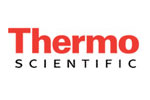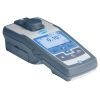Thermo Orion AQ4500 Turbidity Meter
Features
- Nephelometric and Ratiometric measurements with autoranging
- Data log capacity of up to 100 data points
- Includes turbidity standards kit, rugged carrying case, and replacement cuvettes
- Free ground shipping
- Expedited repair and warranty service
- Lifetime technical support
- More
Overview
The Thermo Orion AQ4500 turbidity meter offers advanced features not available on any other benchtop or portable turbidimeter. This dual light source turbidimeter allows the user to quickly and efficiently measure turbidity in compliance with either ISO 7027 Standard or the EPA-approved alternate test method, Orion Method AQ4500.
Standard-Compliant
The Thermo Orion AQ4500 turbidimeter white-light LED and near-infrared LED options allow readings that comply with Orion Method AQ4500, ISO 7027, American Society of Brewing Chemists, or European Brewing Chemists methods.
Unit Choice
Turbidity can be read in the range of 0 to 1000 NTU with a choice of units: NTU, FTU, FNU, ASBC and EBC. In the range of 0 to 40 NTU, the turbidimeter offers a ratiometric range which improves accuracy by reducing or eliminating color interference
Durable
The Thermo Orion AQ4500 Meter is IP67 waterproof with a typical battery life of over 1000 hours on one set of batteries. The internal data logger holds up to 100 points that can later be uploaded to a computer (with AQ4CBL cable). The turbidimeter accepts 24 mm cuvettes and comes with a two-year warranty.
- (1) AQ4500 turbidity meter
- (1) Turbidity standards kit (AC45ST)
- (4) Sample cuvettes, 24mm
- (1) Rugged carrying case
In The News
Two autonomous underwater vehicles launch in Lake Ontario
Two autonomous underwater vehicles are drifting through Lake Ontario, monitoring a slew of environmental metrics, according to a release from New York Sea Grant. The high-tech equipment is recording data on fish productivity, food web changes and algae levels. Each AUV weighs 42 pounds, is six and a half feet long and has a slew of sensors, including side scan sonar and 10-beam Doppler. Mapping capability complements collected parameters like temperature, turbidity, pH and levels of oxygen and phosphorus, among others. The research is made possible through the Cooperative Science Monitoring Initiative between the US and Canada called for under the Clean Water Act of 1972.
Read MoreSensors to help sort out Storm Lake's sediment issues in Iowa
Wind probably isn’t the first thing that people think of when considering causes of poor water quality, but sediment disturbances caused by the combination of shallow waters and high winds are threatening the health of Iowa’s Storm Lake. Although Storm Lake looks picturesque from a distance, the resuspension of sediment is affecting water clarity and exposing harmful nutrients in the water. Led by Clayton Williams and John Downing, professors in Iowa State University’s Department of Ecology, Evolution and Organismal Biology, a research team has begun monitoring the lake to determine the causes and potential solutions to the lake’s sediment issues.
Read MoreClemson studying construction site turbidity
Researchers at Clemson University will help the South Carolina Department of Transportation monitor pollutants discharged from construction sites, according to a release. The state agency wants to make sure it is ready for future federal pollution requirements. Turbidity monitoring near active SCDOT construction sites will judge the effectiveness of the agency’s stormwater runoff protocols. SCDOT will then design enhanced methods to better control runoff from construction sites. Heavy metals, toxic substances and biological pollutants are all associated with runoff from the sites. The study to find better ways to manage the pollutants is funded by a three-year grant from the federal government.
Read More










